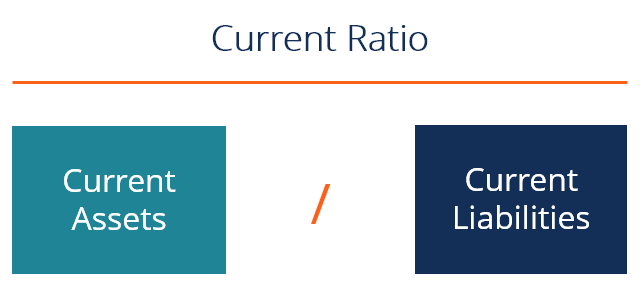
When a company’s current ratio is relatively low, it’s a sign that the company may not be able to pay off its short-term debt when it comes due, which could hurt its credit ratings or even lead to bankruptcy. For example, if a company’s current assets are $80,000 and its current liabilities are $64,000, its current ratio is 125%. The current ratio expressed as a percentage is arrived at by showing the current assets of a company as a percentage of its current liabilities.
Working Capital Calculation Example
This split allows investors and creditors to calculate important ratios like the current ratio. On U.S. financial statements, current accounts are always reported before long-term accounts. Investors can use this type of liquidity ratio to make comparisons with a company’s peers and competitors.
Ask Any Financial Question

You can find these numbers on a company’s balance sheet under total current assets and total current liabilities. Some finance sites also give you the ratio in a list with other common financials, such as valuation, profitability and capitalization. A more conservative measure of liquidity is the quick ratio — also known as the acid-test ratio — which compares cash and cash equivalents only, to current liabilities.
How Can a Company Quickly Increase Its Liquidity Ratio?
We may earn a commission when you click on a link or make a purchase through the links on our site. All of our content is based on objective analysis, and the opinions are our own. Current ratios can vary depending on industry, size of company, and economic conditions. The following data has been extracted from the financial statements of two companies – company A and company B. This is once again in line with the current ratio from 2021, indicating that the lower ratio of 2022 was a short-term phenomenon. Learn how automation is revolutionising the finance sector, streamlining operations and improving work-life balance.
For example, a current ratio of 4 means the company could technically pay off its current liabilities four times over. Generally speaking, having a ratio between 1 and 3 is ideal, but certain industries or business models may operate perfectly fine with lower ratios. Within the current ratio, the assets and liabilities considered often have a timeframe.
- A current ratio that is lower than the industry average may indicate a higher risk of distress or default.
- Large retailers can also minimize their inventory volume through an efficient supply chain, which makes their current assets shrink against current liabilities, resulting in a lower current ratio.
- Through this proactive measure, you effectively improve your firm’s quick ratio from 1.2 to 1.4, strengthening your short-term liquidity position and mitigating potential financial strain.
- Instead of keeping current assets (which are idle assets), the company could have invested in more productive assets such as long-term investments and plant assets.
- If a company has a very high current ratio compared with its peer group, it indicates that management may not be using its assets efficiently.
A current ratio less than one is an indicator that the company may not be able to service its short-term debt. A current ratio of less than 1.00 may seem alarming, but a single ratio doesn’t always offer a complete picture of a company’s finances. Modern financial technology (such as Sage Intacct) boosts the speed and accuracy of quick ratio analysis, supporting agile financial management. This slow, manual approach could lead to outdated insights, making relying on the quick ratio for real-time financial decision-making challenging. Professional services firms rely on accounts receivable rather than inventory.
Additionally, some companies, especially larger retailers such as Wal-Mart, have been able to negotiate much longer-than-average payment terms with their suppliers. If a retailer doesn’t offer credit to its customers, this can show on its balance sheet as a the complete guide to franchise tax high payables balance relative to its receivables balance. Large retailers can also minimize their inventory volume through an efficient supply chain, which makes their current assets shrink against current liabilities, resulting in a lower current ratio.
The prevailing view of what constitutes a “good” ratio has been changing in recent years, as more companies have looked to the future rather than just the current moment. Some lenders and investors have been looking for a 2-3 ratio, while others have said 1 to 1 is good enough. It all depends on what you’re trying to achieve as a business owner or investor. In actual practice, the current ratio tends to vary by the type and nature of the business. Everything is relative in the financial world, and there are no absolute norms.
Company A has more accounts payable while Company B has a greater amount of short-term notes payable. This would be worth more investigation because it is likely that the accounts payable will have to be paid before the entire balance of the notes payable account. However, Company B does have fewer wages payable, which is the liability most likely to be paid in the short term. For every $1 of current debt, COST had $.98 cents available to pay for the debt at the time this snapshot was taken. Likewise, Disney had $.81 cents in current assets for each dollar of current debt. Apple had more than enough to cover its current liabilities if they were all theoretically due immediately and all current assets could be turned into cash.
As of 2021, some industries tend to have higher current ratios than others, such as utilities and consumer staples. Conversely, industries such as technology and biotechnology tend to have lower current ratios. By comparing the current ratio of your company to its industry or to its main competitors, you pick up a little bit more of the story of the company and how it manages debt and income. Of course, a one-time current ratio figure isn’t enough to know much; you really need to look at them across multiple years.